Former NHL Enforcer has Turned to Psychedelics to Heal His Brain and Body
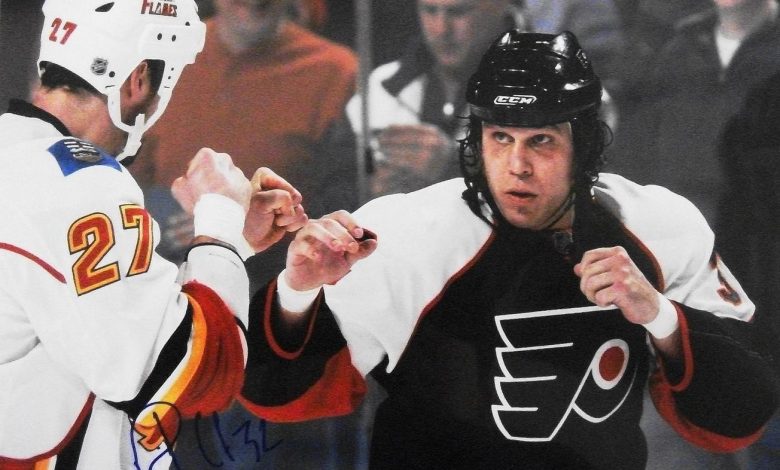
Riley Cote’s journey to enlightenment began in earnest when a hulking man punched him in the face. Cote, now 40 and retired from professional hockey, remembers the moment with a dark laugh. He’d gotten into this particular bust-up one night during the 2009 season with one of the NHL’s most vicious fighters, and took the worst of it, waking the next day with his left eye blackened shut.
“What,” he asked himself, “am I doing?”
He drove to the Philadelphia Flyers training facility and got into the shower. Feeling congested, he reached for a tissue. He didn’t realize he’d suffered a cracked sinus, so what happened next was physics. When he blew his nose, the air — rather than coming out of his nostrils — inflated his face. The pressure surged instantly behind his good eye and closed it tight.
Team trainer Derek Settlemyre heard Cote scream. “His whole face had swollen up,” Settlemyre recalls. “We tell them, if they think they have a fracture, ‘Don’t blow your nose’ — and he did.”
After eight years in pro hockey (four in the NHL, four hopping around its minor-league teams), Cote felt his retirement bearing down. As an NHL “enforcer” — a player whose main role is to get into fights — he’d taken countless hits on the ice. Off it, he self-medicated with booze and drugs. He’d brutalized his body inside and out by the tender age of 28. “I damaged my brain,” Cote says. “Punching it and dehydrating it and partying my ass off.”
 Today, Cote is a new man, with a mane of long brown hair, a yoga-trimmed physique, and an aura of ease in his own skin. It is a transformation he credits largely to psychedelic drugs. Since retiring, Cote has emerged as one of the sports world’s most vocal advocates for what he calls “plant medicines” — from cannabis, itself a light psychedelic, to weightier hallucinogens including DMT and magic mushrooms — to treat post-concussion symptoms (think headaches, insomnia, depression, and possibly, the degenerative brain condition known as chronic traumatic encephalopathy, or CTE). In 2017, Cote co-founded Athletes for Care, a group that promotes research into the physical and emotional health issues athletes face and novel paths for treatment. He regularly speaks at conferences on the benefits of psychedelics. And, perhaps most important, he reaches out to players who are known to be struggling post-career, even arranging magic-mushroom ceremonies where they can safely experiment with the drug.
Today, Cote is a new man, with a mane of long brown hair, a yoga-trimmed physique, and an aura of ease in his own skin. It is a transformation he credits largely to psychedelic drugs. Since retiring, Cote has emerged as one of the sports world’s most vocal advocates for what he calls “plant medicines” — from cannabis, itself a light psychedelic, to weightier hallucinogens including DMT and magic mushrooms — to treat post-concussion symptoms (think headaches, insomnia, depression, and possibly, the degenerative brain condition known as chronic traumatic encephalopathy, or CTE). In 2017, Cote co-founded Athletes for Care, a group that promotes research into the physical and emotional health issues athletes face and novel paths for treatment. He regularly speaks at conferences on the benefits of psychedelics. And, perhaps most important, he reaches out to players who are known to be struggling post-career, even arranging magic-mushroom ceremonies where they can safely experiment with the drug.
Cote understands the hesitation surrounding these substances. While psychedelics fill him with “love,” “gratitude,” and a “connection to a higher energy source,” they are technically illegal throughout most of the U.S. Beyond that, the experience, whether good or bad, can be intense. Certain users experience not just so-called bad trips, but also psychotic breaks from reality. Cote says talking to a first-timer about using psychedelics is basically like asking them: “Do you want to see God? Are you sure?” The ask is so big, the answer is often no.
Cote was worried when he walked into the lunch area at the Good Hope House Retreat Center in Jamaica one day in April, got a green smoothie, and waited for one of the biggest weekends of his life to unfold. An ESPN crew was coming to film a magic-mushroom ceremony he’d helped organize for a group of retired athletes, including former players from the NHL and NFL. All had pledged to eat “breakthrough” doses — enough, that is, to induce a mystical state — of mushrooms containing psilocybin, which is legal in Jamaica.
The opportunity to showcase mushrooms as medicine to a mainstream television audience was a precious thing, but as Cote sat with some early arrivals, he couldn’t enjoy it. He kept mulling a more practical concern: Would everyone actually show up? Two people in particular — Steve Downie, an ex-Flyers teammate, and Justin Renfrow, a former NFL lineman — were due any minute. Or not. In the past 11 years, Cote has invited a lot of people to venture down the magic-mushroom path, and most who say yes subsequently run into excuses not to follow through. In fact, second-thought declinations are so common in Cote’s experience that he doesn’t judge anyone for them.
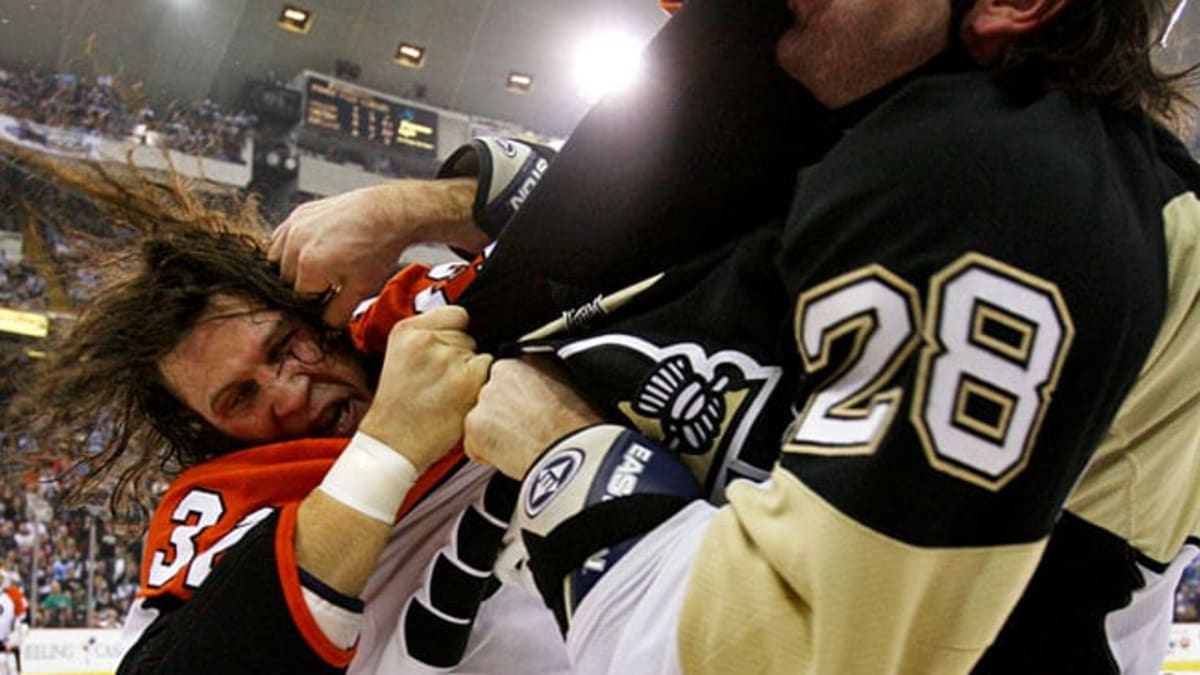
“It’s scary, right?” Cote says. “There’s a fear associated with it. There’s a lot of unknowns, like, ‘Where am I going? What am I getting myself into?’ It all sounds grand when you’re sitting on your couch, you know, and talking about it via text or phone. But when you’ve actually got to be committed to something and actually do it, it’s another story.”
There is some irony here. Since Cote began proselytizing, scientific research bolstering the case for psychedelics has accumulated. Johns Hopkins University in Baltimore established a center for psychedelic and consciousness research in 2019, and has published 50 peer-reviewed papers that indicate psychedelics help treat depression, promote psychological insight, alleviate anxiety in cancer patients, break smoking addiction, and improve overall life satisfaction. In 2018, the Food and Drug Administration, which had for decades held the line against psychedelics, granted “breakthrough therapy” status to psilocybin use for severe depression, an act designed to accelerate the drug development and review process. MDMA, better known as the club drug Ecstasy, also won breakthrough status, and could receive full approval to treat post-traumatic stress disorder next year.
At the same time, the discovery of CTE has created a crisis across all contact sports, linked to myriad symptoms, including memory loss, confusion, impaired judgment, impulse-control problems, aggression, depression, anxiety, suicidality, and progressive dementia. The condition can only be confirmed after death, but the list of the dead with CTE is long, including four soccer players, more than 300 NFL players, and at least a dozen high-profile hockey players: Stan Mikita, Bob Probert, Derek Boogaard, Jeff Parker, Wade Belak, Larry Zeidel, Reggie Fleming, Rick Martin, Steve Montador, Zarley Zalapski, Todd Ewen, and Dan Maloney.
Dr. Julie Holland, a practicing New York psychiatrist and psychedelics expert, says the application of psychedelics to sports medicine is new, but makes sense based on the current scientific literature. “We know that many psychedelics have really potent anti-inflammatory effects,” says Holland, who is also a longtime medical adviser for the Multidisciplinary Association for Psychedelic Studies, or MAPS. “The other thing is, they’re being explored for treating neurodegenerative disorders, including chronic traumatic encephalopathy. These athletes that get multiple blows to the head [represent] a case where you really need not only anti-inflammatory effects, but this purported neuroplasticity that comes with psychedelics.”
Studies largely involving rodents suggest that psychedelics reduce neuroinflammation, a key component of both Alzheimer’s disease and CTE; produce healing from brain injury; and possibly even prompt neurogenesis, or the birth of new neurons. They have also been shown to increase the density of dendritic spines — small protrusions found on nerve cells — in turn spurring the growth of neuronal connections that can be lost in cases of chronic stress or depression. Some human experiments suggest that psychedelics reduce activity in the default mode network (DMN), a web of connected brain regions responsible for self-awareness, social thinking, and thoughts about the past and future. The mystic feelings that users like Cote report — such as the loss of a sense of self, and the ability to set aside the past or think afresh about the future — are thought to arise from this reset of the DMN.
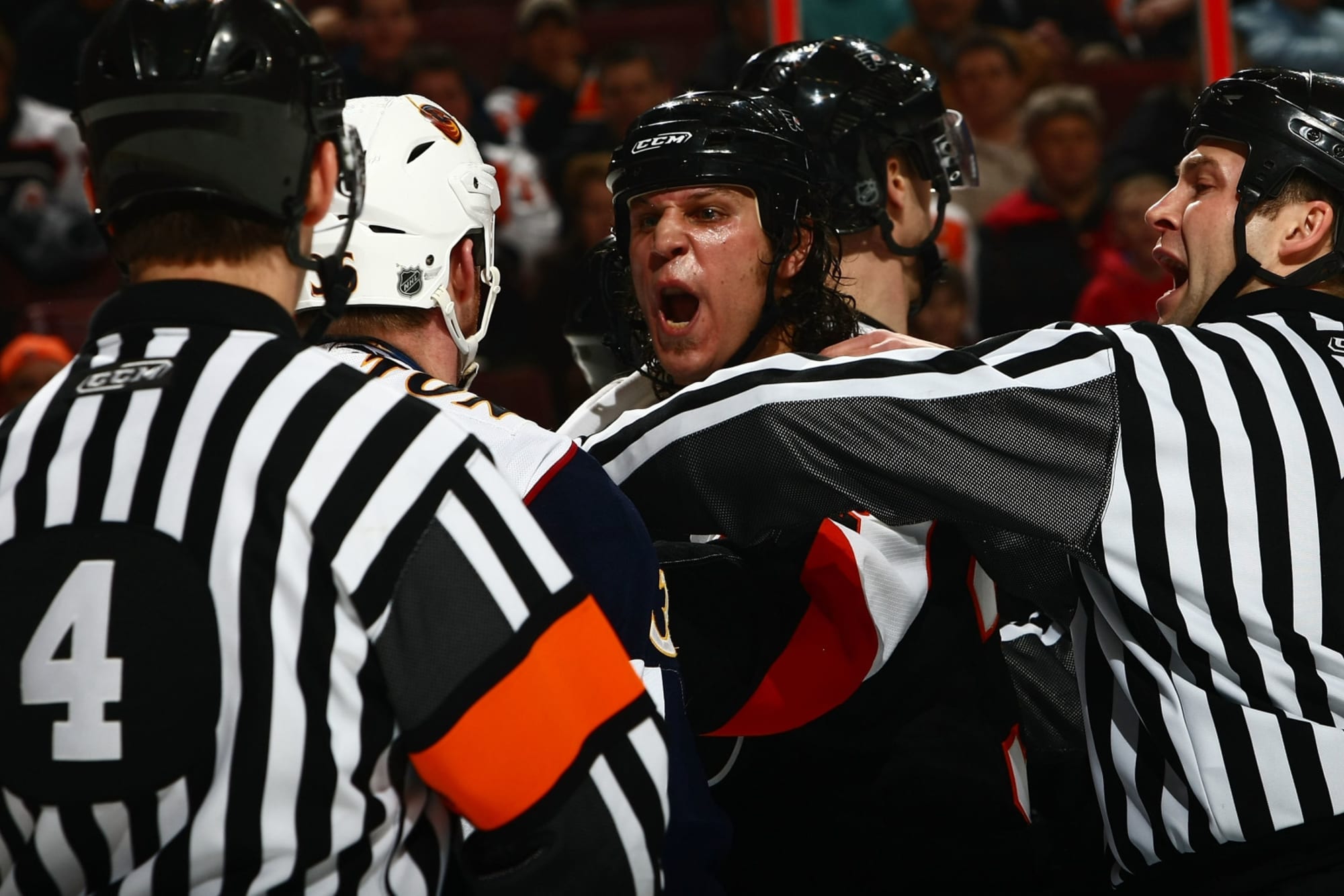
Cote started Athletes for Care with such edgier therapies in mind — initially just cannabis, and then psychedelics as the encouraging science grew. And while he might not be the group’s most famous retiree (members include former NFL star running backs Tiki Barber and Chris Johnson, and former UFC champ “Bas” Rutten), he looms as perhaps its most pivotal figure. He is a partner in a hemp-derived CBD recovery product line called BodyChek Wellness and an adviser to Wake, a multipronged company that is collaborating with Baltimore’s Lieber Institute for Brain Medicine to use genetics research for the development of psilocybin-based treatments tailored to individual patients — a potentially dramatic step toward eliminating “bad” or ineffective trips. At AFC’s most recent board meeting, in March, Cote led a deep discussion around psychedelics, presenting the current body of research and urging the group to strengthen its commitment to incorporate psychedelics into its work.
“Riley has been a leader in this space for a long, long time,” says Marvin Washington, a former NFL defensive lineman, who won a Super Bowl with the Denver Broncos in the late Nineties and became a pro-cannabis activist in retirement. “He was the first athlete I ever heard talking about psychedelics.”
The pair were at a cannabis-related conference several years ago when Cote waxed on about the mental-health benefits associated with taking both small and reality-shifting doses of psilocybin. Washington was surprised and started checking out Cote’s claims. “He was right,” he says. “He deserves a lot of credit for being in early on all plant medicines.”
In his early days playing hockey, as a teenager, Cote discovered that a bong hit in the morning helped him maintain his focus through a long workout. Later, after his skill set proved unequal to becoming a scorer, he remodeled himself as an “enforcer,” or goon, a hockey player whose main job is to punish opponents for any penalties the referee missed. Undersized for the role at six feet one and a playing weight of 220 pounds, Cote brawled his way into the league, racking up more than 200 professional hockey fights. He increased his cannabis use then, smoking weed on a regular basis and finding that it helped him sleep, recover, and manage the anxiety and trauma of bare-knuckle fighting. Magic mushrooms, when he took them, were more of a party drug, a way to enhance the lights and music at a concert.
Cote’s delivery while retelling his own journey is understated. But his presence speaks loudly. His face is rugged, with a nose that moves this way and that, like a switchback trail, to suggest his past. His hands are gnarled. By the time he retired, he had accumulated a litany of injuries: torn ligaments in both knees, a dislocated finger, broken ankle, separated shoulder, three broken noses, and at least four diagnosed concussions. Cote knew back then that he needed to heal up, and intuitively wanted to build on his past experiences with cannabis and psychedelics. So he began reading deeply, discovering that cannabis and psychedelics bore rich histories as natural medicines.
Cote also did as he learned, securing five grams of mushrooms, or what’s known as a “heroic dose,” for his first ceremonial trip. He set an intention to treat the experience as important, even sacred, and arranged his house for the occasion, putting on some ambient music, turning off the electric lights, and setting out a couple of candles. Still, nothing he’d read or done truly prepared him.
Acknowledging the experience was “ineffable, indescribable,” Cote reaches for language, doing his best. It was bliss, he says, and delivered an incredible sense of knowing. Eventually, he lands on something particularly hard to explain to potential initiates: “I felt my ego dissolve.”
This specific result suggests an additional, perhaps unexpected use for psychedelics that might be uniquely valuable to athletes: “For a lot of athletes, and these could be amateurs or professionals,” says Cote, “everything you do from a very young age is geared toward achieving success in that sport. It becomes your identity.”
In Cote’s case, the identity he’d spent so long forging for himself with blood and terror, “jacking up” his emotions to punch people he didn’t hate and often admired, lifted off his shoulders during that first trip like he was “shedding his skin” with no more importance or difficulty than he would remove a coat. “I felt … free,” he says.
 What Cote experienced was actually a typical effect reported by users, and left him feeling like he could set hockey aside to “do whatever I wanted.” He spent the next several years banging away at his new cause, eventually finding a high-profile supporter in Lindy Snider, former vice president for sales with the Flyers and daughter of the team’s beloved late owner, Ed Snider. Cote called her and asked for a meeting, Snider says, and came in quoting the science as it stood at the time. She was impressed.
What Cote experienced was actually a typical effect reported by users, and left him feeling like he could set hockey aside to “do whatever I wanted.” He spent the next several years banging away at his new cause, eventually finding a high-profile supporter in Lindy Snider, former vice president for sales with the Flyers and daughter of the team’s beloved late owner, Ed Snider. Cote called her and asked for a meeting, Snider says, and came in quoting the science as it stood at the time. She was impressed.
“He’s by far one of the leading voices in sports around these issues,” Snider says. “And the athletes he’s brought into Athletes for Care are all very similar. They’ve run the gauntlet in the physical realm like nobody else. And, you know, there’s associated deeper meaning with looking at all of these alternative ways to ameliorate your health, your mental wellness, your state of being, and Riley is always looking at a higher state of being. Whatever those tools look like that help us get there is what his mission is.”
Snider was open to cannabis. She ran a skin-care company that made products for cancer patients and knew of the drug’s potential as medicine. She also helped get her father some cannabis for relief as he lay dying in 2016. But the evolution of Cote’s story has educated her, helping her see that psychedelics, too, bear importance not just in the treatment of brain injury and CTE, but also to help former athletes lead productive, enjoyable post-career lives.
Within the Flyers family, Snider says, she had too often witnessed players suffer a “failure to launch” after retirement. She sadly recalls one player she declines to name who felt so lost after hockey he succumbed to alcoholism and died of liver failure. “I felt we failed him,” Snider says. “And it was this notion that there were things that could have helped him, and he didn’t have access to this stuff.”
It is easy to imagine that athletes would prove particularly challenging to invite on this kind of a trip, the hippie-dippy side of the experience too off-putting for people so deeply task-oriented and rooted in their physical bodies. But Cote says they are no more resistant on that front than anyone else. “The spiritual side of this is always more difficult to address, in general,” he explains. “That’s the world we’re living in.” Still, he routinely pitches the physical benefits as his way in, and finds retired sports stars uniquely receptive. “Elite athletes are always looking for the next best thing and how to optimize their performance,” he says. “The average Joe in the Western world doesn’t give a shit about optimization. They don’t even know what that word means. They don’t understand there’s higher levels of performance. So they just think that wherever they’re at, that’s just the hand that God dealt them.”
Washington, the retired NFL player and cannabis activist, tried psilocybin after listening to Cote talk about it. He now describes it as the “next moonshot” beyond cannabis legalization. He also credits the drug with helping him find a sense of himself “far greater than football.”
One of Cote’s biggest success stories might be retired NHL star and two-time Stanley Cup champion Daniel Carcillo. Nine years of pro hockey had left Carcillo suffering from light sensitivity, headaches, insomnia, anxiety, depression, slurred speech, suicidal ideation, and more. He was public about it, speaking out toward the end of his career, in 2015, about his concussion history, hockey’s disregard for players’ health, and his own failed attempts to find some solution in modern medicine.
After Carcillo retired, Cote says he reached out to him for more than a year about trying cannabis and psilocybin. No luck. It was only when Carcillo reached his darkest point, and started thinking about how he might get a rope around the big wood beams in his ceiling, that “desperation,” as he describes it, drove him to meet with Cote and learn more.
Cote made arrangements for Carcillo to attend a mushroom ceremony in Colorado, a decriminalized state. That first experience, says Carcillo, included the spiritual sensations that psilocybin is known to induce — and something more. A few days later, Carcillo realized that he could start crossing off symptoms: light sensitivity, slurred speech, his suicidal feelings giving way to hope.
Carcillo came home from Colorado and started taking microdoses of psilocybin and occasional breakthrough amounts. He began to enjoy that sense of rebirth that Cote, Washington, and so many others describe. Soon, he was in the news, crediting Cote with “saving my life.”
In May 2020, Carcillo founded Wesana, a startup trying to develop its own psilocybin treatment and earn FDA approval. He is, perhaps out of necessity, more buttoned up than Cote. “In the space that Riley’s in,” Carcillo says, “you can talk more freely about what this does for the spirit. For me, when you go down the FDA path, they don’t care about that. Like, they don’t want to hear that.” In fact, Carcillo says, he no longer uses words like “psychedelic” at all in his work. “I say it’s a compound found in nature. Most all of our medicines are a single extract from a plant found in nature, or fungi. That’s the reality.”
The effects of that “compound” on his psyche have been profound: “This medicine, the biggest stuff that it does … there is always that feeling that you are enough. And one of the things that I’m really interested in is showing people not only can we recover and be a beacon of hope, but you can break out of what you think you need to stay in and do new things.”
In science, a story like Carcillo’s might be dismissed as only an anecdote. But his recovery is seemingly validated through brain scans. The images Carcillo received from neurologists before he tried psilocybin showed a brain suffering from decreased connectivity. Big pockets of red signified areas of the brain that weren’t communicating. His slurred speech was a byproduct — the signals from one part of his brain having to travel around these red areas, a slowdown that affected his enunciation. According to Mark Wingertzahn, Wesana’s chief scientific officer, those initial scans qualified Carcillo for a diagnosis of moderate traumatic brain injury.
After he’d come home, however, and continued his own ad hoc psilocybin therapy for about six months, Carcillo got another set of scans. “What [doctors] were able to see is, those areas of red may have gone down to blue, or in some cases white, which is consistent with that normal brain pattern,” says Wingertzahn, meaning Carcillo’s brain was suddenly showing greater connectivity and function. What interested Wingertzahn most, though, was what happened to Carcillo’s symptoms, which the former hockey player says have been reduced, on a scale from one to 10, to a number not even on the menu: “Zero.”
The reduction of symptoms is what the FDA does care about, says Wingertzahn, who spent 25 years at pharma companies, including Pfizer, getting new drugs to market. He thinks psilocybin-based medicines will be approved in three to five years.
Human trials have shown significant success in the areas of depression, death anxiety, smoking cessation, positive personality changes, and more. Not only that, a pair of studies have suggested that psilocybin treats depression at rates at least equal to, and by some measures much better than, today’s available meds — along with a whole different class of side effects.
Listed side effects for drugs like Lexapro include nausea, sleepiness, weakness, dizziness, anxiety, trouble sleeping, delayed ejaculation, painful erections, difficulty with orgasms, sweating, shaking, reduced appetite, and dry mouth. Noted side effects of psychedelics, aside from that small number who experience a psychotic break, and the occasional bout of nausea or insomnia, include joy, calm, increased awareness, self-confidence, and a sometimes obnoxious desire to tell everybody you meet about your awesome fucking experience.
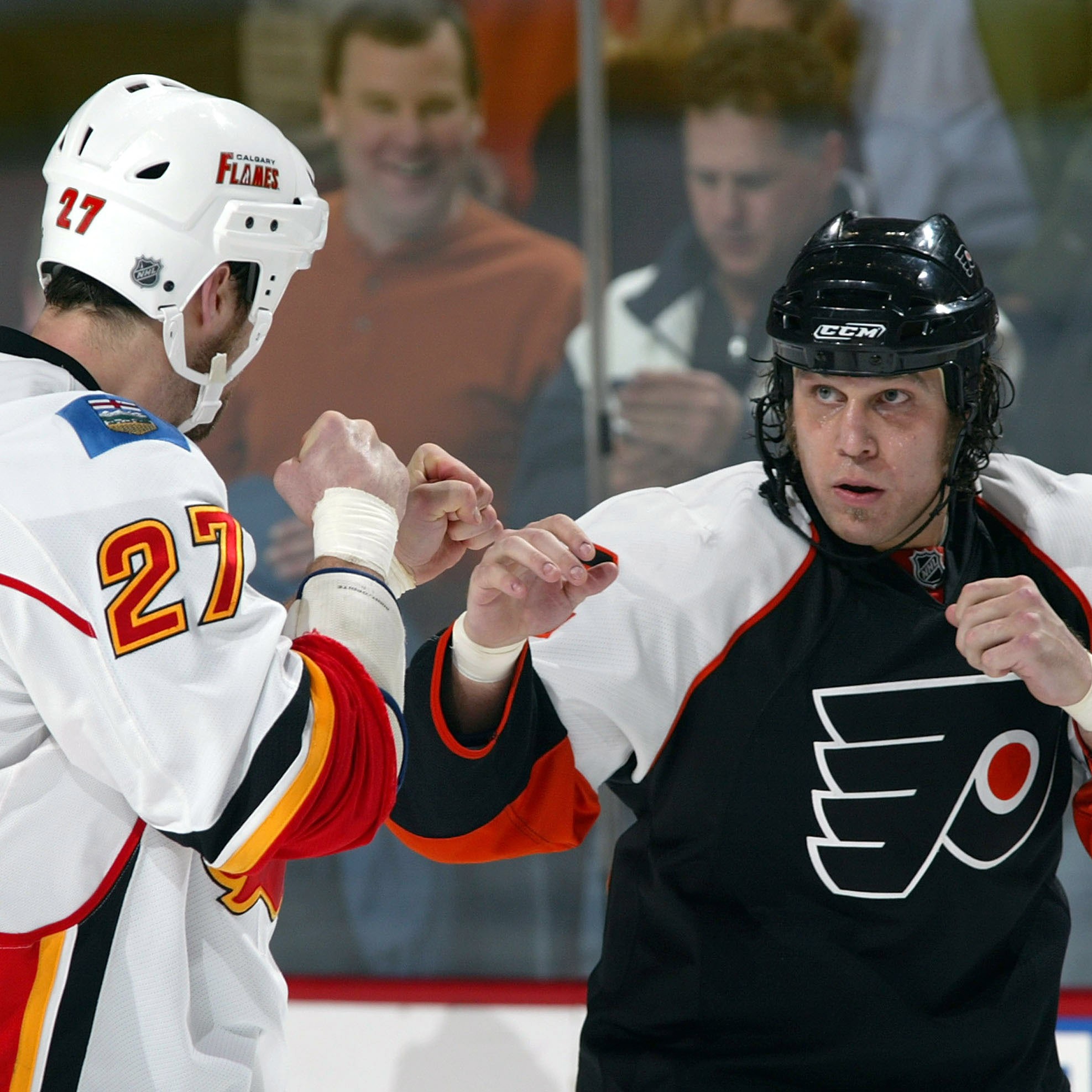
Carcillo, during a Zoom call, smiles and asks: “Are you interested in something like that?” It’s the same question, essentially, that Cote has been asking for years — the seemingly obvious answer left hanging in the air.
In the days before Cote left for Jamaica, a few of the people scheduled to come canceled, including the former offensive lineman Justin Renfrow.
“I was trying to make a lot of excuses,” says Renfrow, who has a lot in common with Cote, having made it to the pros as an undrafted free agent and carved out a difficult career bouncing between NFL squads and the Canadian Football League. “I played football injured since my sophomore year of high school,” he says, explaining that the grind slowly took its toll.
The journeyman tackle told Cote he wasn’t going to make it to the retreat, then secretly asked the universe for a sign. The night before the scheduled trip, he got one: a text message from Wake, the psilocybin research company, delivered at 11:11, a time his family had always invested with mystical meaning. He felt it was his deceased grandmother encouraging him to go.
Cote’s old teammate Downie, meanwhile, said yes to Jamaica, and then complained that he did not have a valid passport, so he would not be able to travel. Cote talked him through that episode. Still, he couldn’t be sure either man would actually get on the plane.
Khara Cartagena, vice president of business development with the Spore Group, one of many startups across the country prepping for the Wild West of psychedelic legalization, was sitting with Cote as he waited to see if Downie and Renfrow would arrive.
“I could see he was distracted,” says Cartagena. “He was clear that it meant a lot to him to help these people.”
But eventually, after an anxious several minutes, Cote lit up at the appearance of Renfrow. And again when he saw a figure he thought he could recognize at a distance — the height just about right, the shape in silhouette familiar, until finally the man got close enough that Cote could see the trademark missing tooth in his smile: Steve Downie, Cote’s old teammate.
“It was all just really beautiful,” says Cote. “I shouldn’t be surprised. Plant medicine delivers, you know. But it was really maybe even better than I expected.”
Both men were moved by their magic-mushroom experiences. Downie teared up after his first dose, and spoke during a subsequent integration session — held to help people process the intense experience — about how his father had died in a car accident while taking him to hockey practice. The ceremony had given Downie an incredible sense of relief.
Perhaps the most powerful moment, though, came when Cote looked at Renfrow deep into the ceremony. Renfrow had spoken to Cote beforehand about his personal uncertainty: Should he continue playing in the CFL, or pursue his passion for the YouTube food show he’s created, What’s Cooking, and try to grow it? A hulking man at six feet five and 320 pounds, Renfrow was wearing a T-shirt with his initials on it in a circle. Then, methodically, he took it off. Cote felt he was watching a peace settle over the big man as it had once settled over him: a shedding of the skin and the birth of someone new.
Renfrow, in a tearful interview after the trip, confirms Cote’s observation: “It felt like my grandma was taking that weight,” the pain and stress of playing through all those injuries, he says. “I didn’t need to keep going through that.” He emerged knowing that he could leave football behind.
Cote, for his part, says that bringing people like Renfrow this kind of existential healing is his calling now, and he marvels at the dichotomy between the “old Riley” and the new. In Flyers-related photos, his eyes are often filled with terror, bestial anger, and sadness. Now, he says, “here I am talking about a flower.”
He laughs.
“It’s been an incredible journey,” he says, “and really, I just want to take as many people with me as possible.”

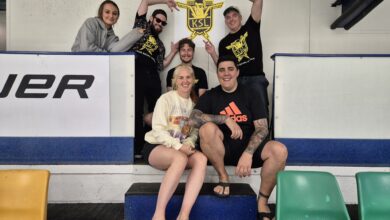
[…] Source link […]
[…] Source link […]